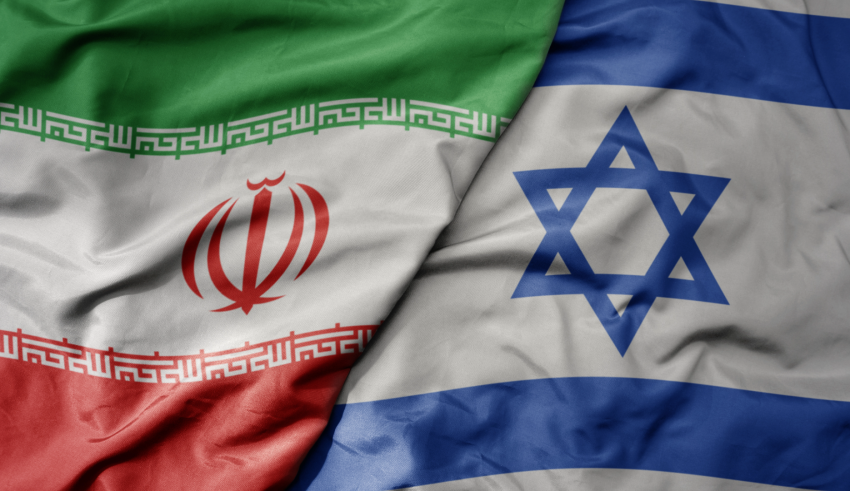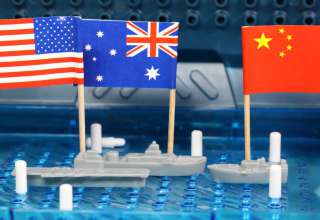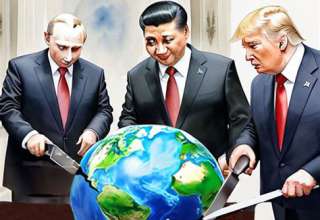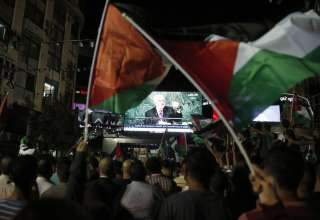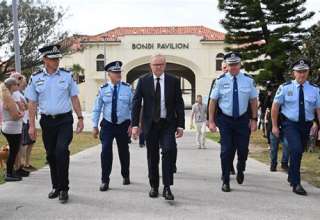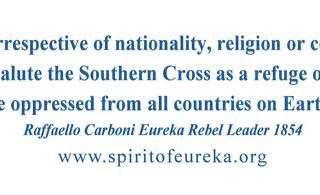By Richard Stone
The US peace initiative between Israel and Iran is to be welcomed although cannot be regarded as an example of skillful diplomacy by Washington. It is more in line with an act of desperation by the Trump administration; a changing balance of forces across the Middle East has had serious implications for traditional hegemonic and diplomatic relations. The terminology used by the US has carried the hallmarks of a panic station mentality.
Secondly, the recent problems in the Middle East, caused by Israel, have been the outcome of a failed US-led regional policy. Washington and the Pentagon, therefore, plan to move on, halting too much damage to Israel, and its regional role as their loyal ‘hub’ for ‘US interests’.
The hasty and problematic US peace initiative between Israel and Iran in late June has shown how serious the limited war between the two countries was for Washington and the Pentagon. Conducted in a blaze of Trump-style diplomacy following his hasty departure from the G7 summit, it was what was not openly stated that was, and remains, of vital significance and importance.
It was openly stated, for example, that Trump and his entourage left early ‘because of what’s going on in the Middle East’. (1) In some ways it was, but not completely due to the Israel-Iran war. Other factors were at play, raising serious considerations for the US.
A changing balance of forces has taken place across the Middle East, with far-reaching implications for US-led regional diplomacy and traditional hegemonic positions.
The rise of BRIC’s, and their ability to recruit further members, including Iran, has presented a serious challenge to NATO countries and their traditional allies. (2) Iran is a centre of Islam. The second-tier recruits to the international trade organisation also include Saudi Arabia, UAE, Egypt and Indonesia, together with further additional ‘partner states’; about forty countries have already expressed an interest in BRIC’s. (3) One application, Palestine, is already under consideration, with a vote due to take place in the United Nations over its existence and international status, which will enhance its BRIC’s application.
While the Middle Eastern additional members of BRIC’s will enable a challenge to US ready access to oil reserves, Iran has the second biggest natural gas reserves in the world, and Gaza has similar reserves offshore. (4)
In fact, the BRIC’s countries, collectively, already have 41 per cent of global GDP; the G7, by comparison, have only 29.08 per cent. (5) The growing imbalance is set to grow. In the short-to-medium term it will act as a pincer upon the US and its allies, in the long-term it will render them as being on the wrong side of history. The position of the US is increasingly untenable, as the combined weight of the G7 have difficulty getting into the first hundred league of countries and their GDP growth rates.
It has caused the Trump administration to seriously re-think its options, which were traditionally based in regional foreign policy implemented decades ago.
While Israel was always intended as a regional hub for ‘US interests’, part of its role was to implement a policy of ‘constructive chaos’ designed to weaken other countries regarded as adversaries to traditional US hegemony.
During the Bush administrations twenty years ago, then Secretary of State, Condoleezza Rice, stated the US military operations in the region were designed to create the conditions for ‘the birth pangs of a new Middle East’. (6) The US sought to create a new order which they could control more effectively. It emerged from the intelligence premise and assessment that ‘real power cannot be exerted if one remains in the status quo, but only, quite the contrary, in the act of destroying all forms of resistance. It is only by plunging the masses into chaos, that the elites can aspire to ensure the stability of their position’. (7)
And that is what Israel has precisely done on behalf of the US across the Middle East: destabilising, bombing and illegally occupying neighbouring countries. Until, that is, a credible challenge took place from BRIC’s and Iran. It, therefore, sent the US into damage control, searching for further options. They continue to search.
It is, furthermore, no coincidence that the Trump administration has demanded NATO member countries increase their contributions to the organisation, immediately, and later, by at least five per cent of GDP by 2035. It is a way in which the US can challenge opposition. In fact, it remains the only way. The reaction of the NATO members to the demands of the Trump administration has, however, been a spectacle in itself. Most have been extremely reluctant to commit their governments to substantial increases in defence expenditure.
The fact that Iran was able to successfully bomb Israel by damaging its Iron Dome system by launching large-scale bombardments overloading the sophisticated radar has also sent the Pentagon scuttling away with their tails between their legs. (8) It was noted with alarm, for example, that, ‘those new threats’, had serious implications. (9) And they have, with evidence not particularly difficult to establish. The world’s media are full of it.
Once able to bomb other regional countries with impunity while pursuing the constructive chaos policies, Israel is now, however, faced with its own bill for ‘hundreds of buildings have been destroyed or heavily damaged, and will cost hundreds of millions of dollars to rebuild or repair’. (10) Much of Israel’s economy has also been ‘shut-down … as a result of the Iranian strikes’. (11)
The cost of the constructive chaos policy has also proved very expensive: it was noted from reliable sources that, ‘the mounting costs add to pressure upon Israel to wrap up the war quickly’. (12) Which is what happened. The media coverage of the role of the Trump administration in the cease-fire between Israel and Iran, furthermore, has been couched in terminology more characteristic of an act of desperation. It was not level-headed diplomacy.
But the, with the scale of the problem confronting the US, it was to be expected.
The fact that the Trump administration, subsequently, had to deal with a leak of sensitive intelligence material from inside the Defence Intelligence Agency which noted the US ‘strike on Iran did not destroy its nuclear program’, has revealed a chaotic state of affairs at the highest levels of administration in Washington and the Pentagon. (13)
The costs, for the US, likewise, have acted as a brake upon their foreign policy: a substantial part of their US$939 billion defence budget has been allocated toward the defence and security of Israel. (14) It has not proved an investment, but to the contrary, a serious drain upon their increasingly limited resources. The so-called US Operation Midnight Hammer ‘saw the deployment by the US of 125 aircraft and 75 precision-guided weapons in strikes on three Iranian nuclear facilities’. (15) It was not a peripheral costing.
Continued US diplomatic initiatives to defence Israel, furthermore, have also added to their increased diplomatic isolation in forums. Even traditional allies, including Australia, now hold the US at arms length.
In conclusion, with Indonesia, as a prominent BRIC’s member and the world’s most populous Muslim nation, now pushing for ‘international recognition of Palestine as a sovereign state’, in a major diplomatic forum for Islamic Co-operation, the pincers are already closing tightly upon US involvement in the Middle East. (16)
Countries across the Middle East, excluding Israel, likewise, now appear to be weighing up their options and diplomatic positions, in terms of the dominant religion and future trade relations, between themselves and outside countries.
1. Trump abruptly leaves G7, Politico, 16 June 2025.
2. Medium – The rise of BRIC’s and decline of NATO., Information Warfare Magazine, 4 February 2025.
3. Ibid., and, ‘Which new countries’, The Birch Gold Group, 2 May 2025.
4. Behind Israel’s ‘end games’ for Gaza, The International Action Center, 14 November 2023.
5. BRIC’s expands with new partner states, G.E., 25 December 2024.
6. The Neo-Conservatives and the Policies of Constructive Chaos, Voltairenet, 28 July 2006.
7. Ibid.
8. How Iran broke Israeli air defences, VOX., 19 June 2025.
9. Ibid.
10. Golden drain: Bibi’s $620m-a-day war, The Weekend Australian, 21-22 June 2025.
11. Ibid.
12. Ibid.
13. ‘Loser’: White House, The New Daily, 25 June 2025.
14. Counting the huge cost of Trump’s hammer blow, The Australian, 25 June 2025.
15. Trump’s 24 hours of turmoil, The Australian, 26 June 2025, and, Counting the cost, ibid., Australian, 25 June 2025, which has provided a full list of costs for Operation Midnight Hammer.
16. Jakarta call for Islamic unity to halt conflict, The Australian, 24 June 2025.

